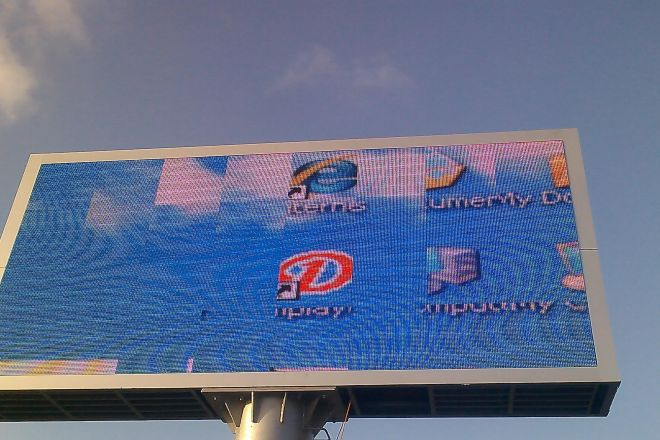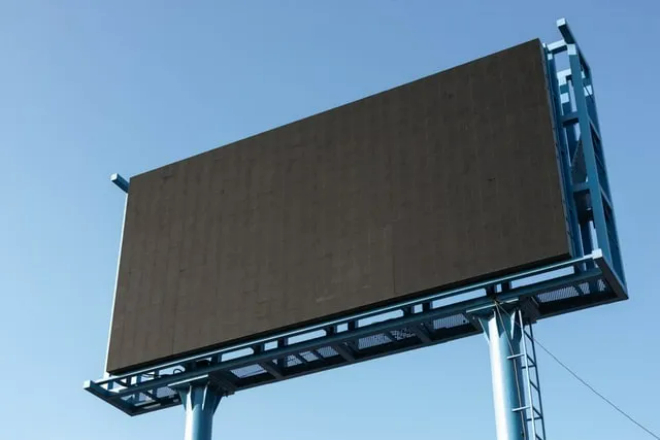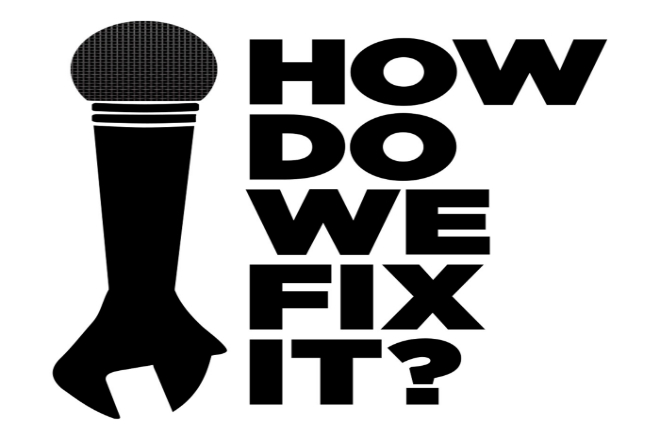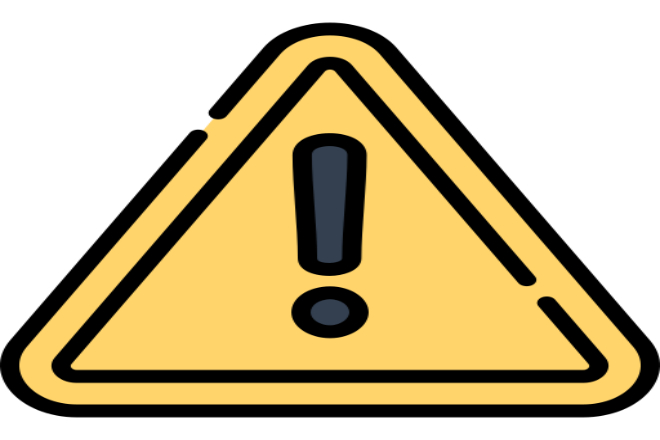Introduction

We can see the widespread use of LED displays in many places. But do you know? As the core component of the LED display, once the control system fails, it will directly affect the normal operation and display effect.
Therefore, how to quickly and accurately troubleshoot and handle the failure of the LED display control system has become an important task for us.
1. A brief overview of the LED display control system
Speaking of the control system, it is the “soul” of the LED display! Without it, the LED display is just a pile of lamp beads that can’t light up.
1). Signal reception and processing:
The control system is like a smart “translator.” It can “translate” signals from computers, video players, and other devices into a language that LED lamp beads can understand. This process is not simple.
The control system needs to decode, convert, and process the signal before it can be turned into data suitable for display on the LED display.
2). Image display control:
The control system is also the “painter” of the LED display. It controls the on and off and color changes of each LED lamp bead according to the processed data.
Just like a painter uses a brush to paint on a canvas, the control system uses LED lamp beads to “paint” various images and texts on the display screen. Moreover, it can also achieve very precise control so that each LED lamp bead displays the most accurate color and brightness.
3). System management and maintenance:
The control system is not only a “commander” and “painter” but also a “nanny” for the LED display screen. It is responsible for monitoring the working status of the display screen and for discovering and handling various fault problems in a timely manner.
For example, if a certain LED lamp bead is broken, the control system can find and report it so that we can replace it in time. Moreover, it can also adjust the brightness and color correction of the display screen to keep the display screen in the best condition.
2. What are the common fault types of LED display control systems?

The common fault types of LED display control systems are indeed quite diverse, mainly including hardware faults, software faults, and network communication faults. Below, I will use more popular language to tell you about these fault types in detail.
1). Hardware fault
1.1). Control card fault
- Cause of fault:
The control card is like the “brain” of the LED display screen, responsible for processing various signals. But it may overheat after working for a long time, or it may have problems due to aging of the circuit board, damage of components (such as a small capacitor or resistor being broken), poor welding, etc.
- Fault phenomenon:
You may find that the display screen does not display anything, or some areas display strangely, such as wrong colors, or the image flickers like dancing.
- Solution:
First, check whether the indicator light on the control card flashes normally. Then, the multimeter, the “electric doctor,” is used to measure the voltage and resistance of each pin of the control card to see if any components are broken. Finally, try to re-plug the control card or simply replace it with a new one.
1.2). Power module failure
- Cause of failure:
The power module is the “heart” that powers the LED display. But it may have problems due to unstable voltage (such as too high or too low voltage), overload (that is, too much electricity is used), short circuit (that is, the wires touch each other), or aging of components.
- Fault phenomenon:
The display screen may not light up, or the brightness may be bright and dim for a while, like a breathing light, or even completely black.
- Solution:
Use a multimeter to measure the input voltage and output voltage of the power module to see if it is stable. Measure the current and resistance again to see if any components are broken. Finally, try to replace a new power module.
1.3). Failure of the connection wire or interface
- Cause of failure:
The connection wire or interface is like the “nerve” of the LED display, responsible for transmitting signals. But they may wear out, age, or have poor contact (not connected properly) due to long-term use.
- Failure phenomenon:
Some areas on the display may not display normally, or the signal suddenly disappears, and the display content becomes incomplete.
- Solution:
Check whether the connection wire and interface are loose or broken. Try to re-plug the connection wire or replace it with a new one. A multimeter is used to measure the resistance and voltage of the connection wire to see if there is a break or short circuit.
2). Software failure
2.1). Control software crashes
The control software is like the “commander” of the LED display. But it may crash because the software itself has vulnerabilities, “fights” with other software (that is, conflicts), or insufficient system resources (such as too little memory).
- Failure phenomenon:
The display may not show anything, or the software suddenly stops responding or even shuts down automatically.
- Solution:
Check if the control software version is the latest; try to update the software or reinstall it. Then, check the system resource usage, such as CPU usage, memory usage, etc., close some unnecessary applications, and “reduce the burden” on the system.
2.2). Driver incompatibility
The driver is like a “translator” between the LED display and the computer. But if the operating system is updated, the hardware is upgraded, or the driver version is too old, it may be incompatible.
- Fault phenomenon:
The display may not display normally, or the device cannot recognize it at all.
- Solution:
Check if the driver version is compatible with the operating system and hardware. Try to update the driver or install a driver suitable for the current operating system and hardware.
2.3). Configuration parameter error
Configuration parameters are like the “settings” of the LED display. But if the human operation is wrong, or the software is set improperly, or the hardware changes but the settings do not change, it may go wrong.
- Fault phenomenon:
The display may not display normally, or the device may not work at all.
- Solution:
Check the configuration parameters of the control software, such as resolution, refresh rate, color settings, etc., to see if they are correct. Adjust the configuration parameters according to the hardware changes. Or try resetting the control software to the default settings and then reconfigure it.
3. Methods for troubleshooting and diagnosis of LED display control systems

Troubleshooting and diagnosing LED display control systems is a systematic process that requires comprehensive consideration of hardware, software, and network communications. The following is a detailed description of the troubleshooting and diagnosis methods for hardware failures, software failures, and network communication failures:
1). Hardware troubleshooting and diagnosis
1.1). Check the physical status of hardware devices such as control cards and power modules
- Steps:
First, observe the appearance of hardware devices such as control cards and power modules to see if there is obvious physical damage, such as burn marks, deformation, cracking, etc.
Check the connection of the hardware devices to ensure that all connecting wires are firm and reliable without loosening or falling off.
Observe the indicator lights on the hardware devices to see if there are abnormal flashing or extinguishing conditions, which usually indicate the working status of the hardware devices.
- Purpose: Quickly locate possible hardware problems through visual inspection.
1.2). Use tools such as multimeters to measure parameters such as voltage and current
- Steps:
Use tools such as multimeters to measure parameters such as input voltage, output voltage, current, etc., of hardware devices such as control cards and power modules.
Compare the measurement results with the normal working range to determine whether the hardware devices have problems such as unstable voltage or excessive or insufficient current.
- Purpose: Through precise measurement, further confirm whether the working status of the hardware devices is normal.
1.3). Replace suspected faulty hardware for verification
- Steps:
According to the results of the first two steps, the suspected faulty hardware devices are determined.
Replace the suspected faulty hardware devices and observe whether the fault phenomenon disappears.
If the fault phenomenon disappears, confirm that the hardware device is the source of the fault; if the fault phenomenon still exists, continue to check other possible fault points.
- Purpose: Accurately find and repair the faulty hardware device through the replacement method.
2). Software troubleshooting and diagnosis
2.1). Restart the control software and check whether it returns to normal
- Steps:
First, try to restart the control software to see if it can resume normal operation.
Observe whether the restarted control software can correctly identify and control the LED display.
- Purpose: Through a simple restart operation, eliminate the problem caused by temporary software failure.
2.2). Update or reinstall the driver
- Steps:
Check whether the driver version is compatible with the operating system and hardware.
If the driver version is too old or incompatible, try to update or reinstall the driver.
Restart the computer and control software to check whether it is back to normal.
- Purpose: By updating or reinstalling the driver, solve the failure caused by the driver problem.
2.4). Check and correct the configuration parameters
- Steps:
Enter the setting interface of the control software and check whether the configuration parameters are correct.
According to the actual situation of the LED display and user needs, adjust the resolution, refresh rate, color settings, and other parameters.
Restart the control software and check whether it is back to normal.
- Purpose: By checking and correcting the configuration parameters, ensure that the control software can correctly set and drive the LED display.
4. How to handle and repair the fault?
1). Hardware fault handling
Hardware faults are a common problem in the control system of LED displays, and they require carefulness and patience to handle. Here are the specific steps for hardware failure:
1.1). Replace the damaged hardware device
- Discover the fault:
First, determine which hardware device has a problem through troubleshooting, such as the control card, power module, or connection cable.
- Prepare replacement parts:
Find replacement parts of the same model or compatible with the damaged device. If you don’t have them on hand, you may need to go to the electronics market or contact the supplier to buy them.
- Safe disassembly:
Before disassembling the damaged device, be sure to turn off the power first to avoid the risk of electric shock. Then, carefully disconnect all connections related to the damaged device.
- Install new equipment:
Install the new device according to the original connection method, and make sure all interfaces are firmly plugged in and not loose.
- Test:
Re-power on and observe whether the new device works properly and whether the LED display can display normally.
- Tip:
During the disassembly and installation process, remember to take pictures to record the location of the connection cable to avoid installation errors.
1.2). Adjust the hardware device connection to ensure good contact
- Check the connection:
Sometimes, the fault maybe just because the connection cable is loose. Therefore, carefully check the connection lines and interfaces of all hardware devices.
- Clean the interface:
If you find dust or dirt on the interface, wipe it gently with a clean cloth or cotton swab.
- Re-plug:
Re-plug the cable to ensure good contact.
- Test:
Test again to see if the fault is eliminated.
- Tips:
When plugging and unplugging the cable, be gentle to avoid damaging the interface or line.
2). Software troubleshooting
Software failure is also a common problem in LED display control systems. The following are specific steps for handling software failures:
2.1). Restore software default settings or perform software upgrades
Restore default settings: Sometimes, software failures may be caused by improper settings. You can try to restore the software’s default settings to see if the problem can be solved.
Software upgrade: Check if there is an updated version of the software. If so, download and install the update. The new version may fix the bug in the old version.
Restart the software: After the upgrade, restart the software to see if the function returns to normal.
Tips: Before restoring default settings or upgrading the software, it is best to back up important data.
2.2). Clean up software cache and junk files
Find the cleanup option: Go to the software’s settings or options menu and find the option to clean up cache or junk files.
Perform cleanup: Click the cleanup option and wait for the cleanup to complete. This may take some time, depending on the number of cache and junk files.
Restart the software: After the cleanup is complete, restart the software and see if the performance has improved.
Tip: Regularly cleaning up software cache and junk files can free up system resources and improve software efficiency.
2.3). Strengthen software security protection
Install antivirus software: Install a reliable antivirus or firewall software and ensure that it is running in real-time.
Regular scanning: Scan the system regularly with antivirus software to find and remove viruses or malware.
Download with caution: Avoid downloading and installing software or plug-ins from unknown sources to avoid infection with viruses or malware.
- Tip: Strengthening software security protection is an important measure to ensure system security. Do not click on unknown links or download unknown files at will.
5. Suggestions for fault prevention and daily maintenance of LED display control system

In order to ensure the stable operation of the LED display control system, extend its service life, and reduce the possibility of failure, the following are some suggestions for fault prevention and daily maintenance:
1). Regularly check the operating status of the LED display and control system
1.1). Daily inspection:
Perform daily inspection once a day or a week to observe whether the display effect of LED display is normal and whether there are bright spots, dark spots, or color distortion.
Check whether the indicator light of the control system is normal and whether there are abnormal alarms or fault prompts.
1.2). Professional inspection:
Invite professionals to conduct a comprehensive inspection of the LED display and control system regularly (such as quarterly or semi-annual), including electrical connection, signal transmission, heat dissipation, etc.
Use professional test tools to test the brightness, contrast, refresh rate, and other parameters of the display to ensure that they are within the normal range.
1.3). Recording and analysis:
Establish an operation log to record the results and problems found in each inspection.
Analyze the log data to discover potential fault trends in a timely manner and take preventive measures.
2). Regularly clean and maintain hardware equipment
2.1). Cleaning work:
Use a soft cloth or special cleaning agent to regularly clean the surface of the LED display screen to remove dust and dirt.
Clean the cabinet, wiring terminals, and other components of the control system to ensure that there is no dust accumulation and corrosion.
2.2). Maintenance work:
Regularly check whether the fasteners of the hardware equipment are loose. If they are loose, tighten them in time.
Replace worn parts (such as fans and power modules) regularly to prevent them from aging and causing failures.
3). Timely update and upgrade control software and drivers
3.1). Software update:
Pay attention to the update notifications of the control software manufacturer, and download and install the latest version of the software in time.
New versions of software usually contain bug fixes, performance optimizations, and new features, which help improve the stability and availability of the system.
3.2). Driver update:
Regularly check and update the drivers of the LED display screen and control system-related hardware.
Driver updates can fix hardware compatibility issues and improve system performance.
Conclusion
Through the explanation in this article, we have a detailed understanding of the basic structure of the LED display control system, common fault types, troubleshooting, and diagnosis methods, as well as fault handling and repair measures.
At the same time, we also put forward suggestions for fault prevention and daily maintenance, aiming to help everyone better ensure the normal operation of the LED display and extend its service life.
Finally, if you want to know more about LED displays, please get in touch with us.
